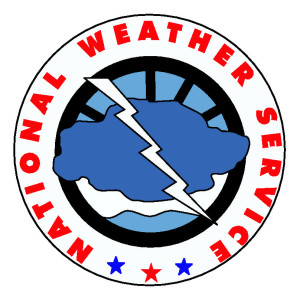 The National Weather Service is a unique division of the federal government that provides weather data, news and predictions for the country in order to help citizens, business and the economy. This service is unique because it is one of several components, being part of the much larger, National Oceanic and Atmospheric Administration that is run and operated under the United States Department of Commerce. While they all interact and provide services for the benefit of each other, the National Weather Service does function individually and is the most present of the three bodies to the American people.
The National Weather Service is a unique division of the federal government that provides weather data, news and predictions for the country in order to help citizens, business and the economy. This service is unique because it is one of several components, being part of the much larger, National Oceanic and Atmospheric Administration that is run and operated under the United States Department of Commerce. While they all interact and provide services for the benefit of each other, the National Weather Service does function individually and is the most present of the three bodies to the American people.
Services Provided By the National Weather Service
To better understand how this service fits into the other two listed agencies, it is best to understand the service provided, why the services are provided and the mission of the agency as a whole. Not only is the service there to let the public know about inclement weather, what is coming on a daily basis and offer advice for dealing with the weather, but it is in place to make sure that our economy is maintained and protected at all times as depends on the weather.
There are a lot of things that can happen in communities, regions and entire states on account of the weather, causing both millions of dollars in damage, but also preventing business and commerce from functioning normally. This agency is set up to track the weather and help businesses best prepare and plan for inclement weather that can cause damage. Ultimately, it was created under the Department of Commerce to protect the way the economy responded and prepared for the weather.
How Information is Relayed
As the National Weather Service grew it became the face of the weather to the public, what everyone looks to as they need to know and understand what is happening in their own corner of the country. Working with local stations and weather agencies, the service is the main provider of information and data, so most reports are based on the information that comes through their centers.
This information is then passed on to the general public, and it can be just the general weather report for the day, or more closely scrutinized bad weather reports that can be dangerous or cause other types of problems in certain areas, such as flooding. When weather that is dangerous is approaching an area, the service triggers alarms and warnings, to give warning for people in the path of weather take shelter, or prepare. These warnings can come as early as days to minutes before they hit, depending on the type of storm.
Related Resource: Protective Services Operations
In addition to these services, there is also work being done behind the scenes to follow and track weather related events that are naturally occurring, but present issues or need to be monitored. Issues like drought and rainfall are constantly tracked and recorded, and satellites are used to gather this information at all times. Ever since the agency began operating, data has been collected and organized in the best way to help us predict and see where changes have occurred.